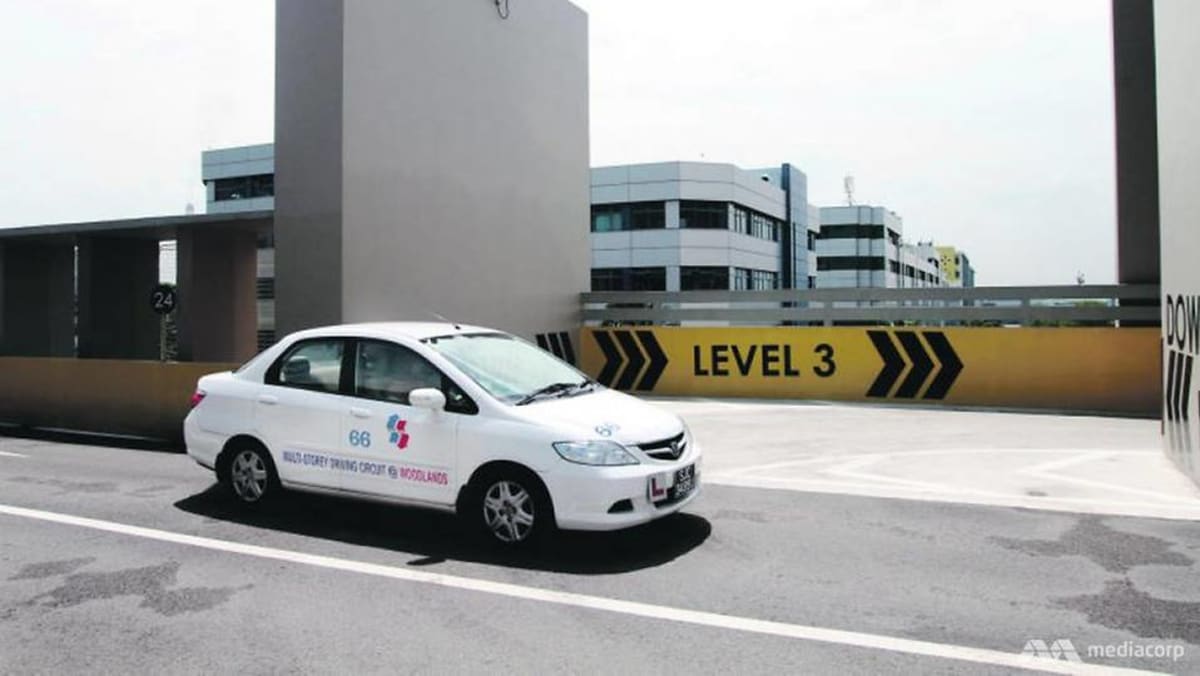LESSONS FROM LABELLING HIGH-SUGAR DRINKS
MOH and HPB said that the extension of the nutrition labels to more products builds on the success of the Nutri-Grade measures in changing how sugar-sweetened beverages are made, and encouraging consumers to switch to healthier drink options.
Back in December 2022, as part of the efforts to reduce the population’s sugar intake and risk of diabetes, MOH introduced the Nutri-Grade labelling requirements and set advertising prohibitions for pre-packaged beverages, later extending these to include freshly prepared drinks last year.
Right now, the Nutri-Grade system labels beverages with grades ranging from A to D, with D being the unhealthiest.
The median sugar level of pre-packed Nutri-Grade drinks has gone down from 7.1 per cent in 2017 to 4.6 per cent in September 2023.
About six in 10 beverage retailers dealing with freshly prepared drinks are now offering less sweet choices by default.
As for the response from consumers, as of September last year, 69 per cent of beverages they bought were graded A to B — up from 37 per cent in 2017.
With the “positive impact” of this labelling system in helping to lower consumers’ sugar intake, the authorities therefore plan to extend it to “key contributors” of sodium and saturated fat in the retail setting, they said.
The primary features of the present Nutri-Grade measures are expected to be retained, and further consultation will be done with industry stakeholders over the coming months from September.
For the food-and-beverage (F&B) sector, the authorities will focus on ramping up voluntary, store-front labels to help consumers identify shops that offer healthier dishes or that use less salt and sauces in preparing their food.
“We will also step up on public education efforts to educate consumers and F&B operators on the importance of reducing sodium in food, and strengthening our engagements across the supply chain to increase F&B operators’ access to healthier ingredients,” MOH and HPB said.
WHY MORE PRODUCTS WILL GET NUTRI-GRADE LABELS
Instant noodles, as well as salt, sauces and seasonings added to food, were identified as the main contributors to the high intake of sodium among consumers here, while the key source of saturated fat intake is cooking oil.
“Despite growth in the availability of healthier salt, sauces, seasonings and cooking oil in the market, adoption among consumers and F&B operators remains low,” MOH and HPB said.
For instant noodles, there continues to be a lack of healthier alternatives, with less than 5 per cent of products qualifying as healthier and a low demand for instant noodles with a Healthier Choice Symbol. The symbol is issued by HPB for products that meets certain nutritional criteria.
In response to questions from the media on whether instant noodles as a product can be considered healthy, HPB said at a media briefing on Wednesday that it is not defining any particular product category as “not healthy”, but pointing consumers to healthier options for instant noodles.
“For us, ultimately, consumers want to have a choice, so if you really want to eat instant noodles, are there better options?
“We are not saying that it’s healthy, neither are we saying it’s super unhealthy, we let consumers make the choice,” HPB said.
Excessive sodium intake is a key risk factor for hypertension or high blood pressure, while excessive saturated fat intake is a key risk factor for hyperlipidaemia or high cholesterol.
Pointing to past national survey results, the prevalence of high blood pressure has climbed from 19.8 per cent in 2010 to 37 per cent in 2021 to 2022, the authorities said.
The prevalence of high cholesterol has remained “worryingly high”, with 31.9 per cent of Singapore residents having the condition in the same period.
The recent National Nutrition Survey 2022 also showed that nine in 10 Singapore residents exceeded the recommended sodium limit of 2,000mg a day and consumed almost double the daily limit of sodium, averaging about 3,620mg a day.
Saturated fat also made up 36 per cent of the total fat that people here consumed daily. This exceeded the recommended dietary fat intake of no more than 30 per cent saturated fat.
MOH and HPB engaged more than 80 market leaders across the food supply chain to discuss measures to reduce consumers’ sodium and saturated fat intake.
They said that manufacturers in the retail sector have “begun their reformulation journey”, but F&B operators reported that tackling sodium and saturated fat content in dishes is “more challenging”, given that ingredients added during cooking can vary.
“The F&B operators also highlighted that time would be needed for consumers to adjust their palates and accept lower-sodium dishes, and for operators to adopt healthier ingredients,” MOH and HPB said.
Last month, the authorities also began educating hawkers on the need to cut down on sodium. Hawkers were given samples of healthier products such as lower-sodium salt, sauces and seasonings, and encouraged to switch to such ingredients.
So far, 40 hawker centres have been engaged. HPB said that it aims to approach 60 hawker centres by end of this year, and another 50 hawker centres in 2025, covering a total of 110 hawker centres.
OBSTACLES THAT HEALTH EXPERTS FORESEE
Commenting on the authorities’ latest move to extend the labelling scheme, health experts said that it will be effective in encouraging consumers to choose healthier products, similar to its impact for sugar.
Professor Tan Huay Cheem, chairman of the Singapore Heart Foundation, said that even a small reduction in one’s sodium intake can make a substantial difference, pointing to an American study in 2010, which found that a reduction in 350mg in sodium a day could lead to a reduction in blood pressure by 1.25 millimetres of mercury.
Prof Tan, who is also senior consultant at the National University Heart Centre’s department of cardiology, added: “The number may seem insignificant, but this is particularly important in Singapore, where hypertension rates have been increasing.
“A reduction of sodium intake on a population basis can lower blood pressure and its attendant complications of stroke, heart attack and death significantly.”
Professor Teo Yik Ying, dean of the Saw Swee Hock School of Public Health, said: “Sodium and saturated fats are convenient flavour enhancers, but are not necessarily the only way to make a product tasty and flavourful.”
He added that Singaporeans like to have side accompaniments of chilli and soya sauces when they have their meals, and this practice invariably increases sodium intake.
“With this expansion of Nutri-Grade to sodium, focusing on sauces and seasonings, it is also sending out a loud and clear message to the population to be conscientious in the incidental consumption of high-sodium sauces,” Prof Teo added.
The industry also has to experiment with natural flavours to make up for the lower sodium content.
Prof Teo said that giving the industry enough time to respond, experiment and reformulate could lead to new products that use healthier ingredients and it will be more effective than a downstream approach focusing on consumers.
“Influencing what the industry produces is much more sustainable, because this directly affects the supply chain and the type of products that are available on the market. Influencing demand, which means trying to change the practices of the individual consumers, will take a lot more effort and resourcing,” he explained.
However, Prof Tan from the Singapore Heart Foundation cautioned that even though the move to extend the Nutri-Grade scheme might “hold promise”, tackling sodium and saturated fat intake can be challenging on a different level compared to regulating sugar intake through beverages.
These nutrients are more pervasive in a broader range of food products, and sodium and fats “contribute significantly” to the taste and texture of foods.
People in Singapore also have the long-standing habit of eating out, and many common hawker dishes such as fishball noodles soup have a high sodium content, making it more difficult to choose lower-sodium food.
Public education on the harms of overconsumption of sodium, how to read a product’s nutrition information accurately, coupled with industry cooperation to offer healthier food and beverage options, will help consumers make healthier choices, he added.













